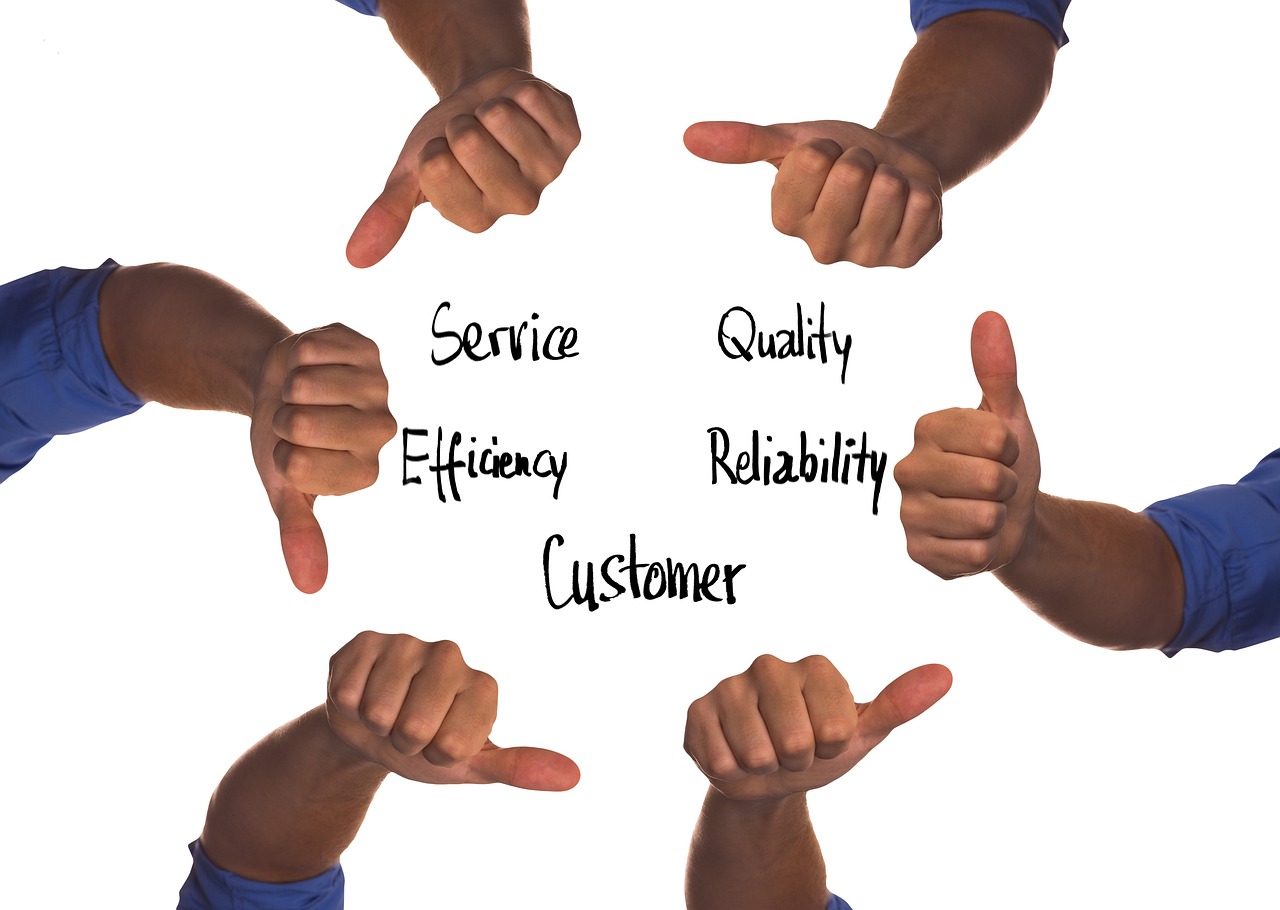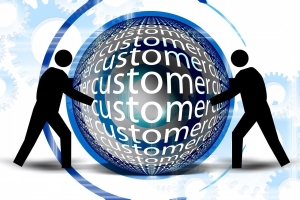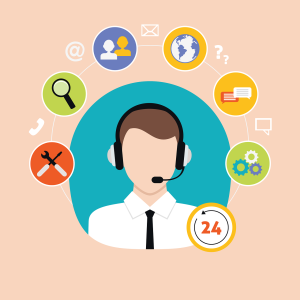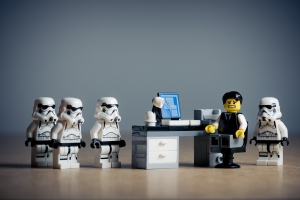A Comprehensive Guide to Customer Loyalty
Get Started
Call-to-action
Tel: (+234) 802 320 0801, (+234) 807 576 5799
Email: info@Stonehillresearch.com
Office Address: 5, Ishola Bello Close, Iyalla Off Street, Alausa, Ikeja, Lagos, Nigeria
Introduction
Consumer loyalty describes the tendency of a particular customer to keep on purchasing a particular brand, product, or service. It entails repeat purchases, having a positive attitude toward the product, and a willingness to speak well about the product. It is long-term, grounded in positive interaction, and oriented toward the product or the company with which the customer identifies.
Importance of Consumer Loyalty in Today’s Competitive Market.
Loyalty is today’s byword in an extremely competitive market, which is why it is fundamental for the sustainability of a business. It not only aids customer cost that is associated with customer acquisition but also encourages customers to make subsequent purchases which increases the lifetime % of value of any customer. Such customers have a lesser tendency to compare prices of different brands and are ready to pay for the quality brand they trust besides they boost up the brand image of the company.
Key Strategies and Concepts and Brief Overview
To foster consumer loyalty, businesses can implement the following key strategies:
Exceptional Customer Service: Organizing customer care based on its ability to deliver a timely, appealing, and sensitive service that will easily be remembered.
Loyalty Programs: Using self-promoting incentives such as giving rewards, using multiple levels of membership, and more such unannounced bonuses.
Building Trust and Transparency: Overcoming fraudulent conducts and maksism of messages towards consumers and acting responsibly and with accountability in social networking sites.
Personalization: By adopting data in categorizing the marketing and creating specific offers and promotions to improve customer satisfaction.
Customer Feedback: Listening to its customers and being able to address their complaints about services offered and making sure that it gets to a point where its customers feel that their voices count.
These strategies complement each other to form long-term relationships with the consumers, whereby they can easily transform occasional purchasers into regular customers.
Understanding Your Customers
Identify Customer Needs
Awareness of the needs of the customer is the starting point in the development of consumer loyalty. Organizations need to understand this by discovering the needs and expectations of consumers to develop services and products that appeal to them. Key strategies for uncovering customer needs include:
Surveys and Questionnaires: Consistently seek to engage customers in discussions on their wished, disliked, and expected products.
Data Analytics: Use customer information to understand purchasing patterns, browsing history, and interactions. This creates easy forecasts of needs and the identification of new trends and diseases.
Social Listening: Closely watch what customers are posting on social media and in other customer online forums where they talk about products, services they have bought, or even the experiences they have been through. This provides a timetable for what they consider important or would like to change.
In this way, every need to be met to increase satisfaction and guarantee customers to remain loyal to the business and its products/services offered.

Segment Your Audience
Audience segmentation is relevant in the marketing strategy to establish various forms of interactive marketing messages that appeal to specific segments of the audience. Rather than taking a one-size-fits-all approach, segmenting your audience allows you to:
Tailor Messaging: The same with regards to different segments that are based on demographic, buying behavior, or preference because these need to be asserted with the right message that can hook and is relevant to them.
Deliver Personalized Offers: That is why businesses need to research the specifics of each segment so that they can target the consumers with deals, promotions, and product suggestions that will make the consumers repeat their purchases.
Improve Customer Retention: It also makes the interactions more relevant enhancing the experience of the customer and hence making him or her come again.
Relationship marketing requires better segmentation because this means learning about the customers and finding out how to better relate with them in the long run.
The Feedback Process in Enhancing Products and Services, and Consumers Experience
Customer feedback is also an essential factor for the effective management of constructive changes together with consumers. Managing feedback as an essential source adopted in organizations makes businesses sensitive to the customers’ new trends.
Product and Service Improvement: Others help to identify lapses that may be there in the delivery of products or services. This brings the idea that, by eradicating or minimizing these pains, a business can improve its products and service delivery to meet customers’ expectations.
Customer Experience Enhancement: It unveils customer experience during the purchase process and after the purchase process known as the post-purchase experience. In satisfying these areas of customer experience, there are improvements in the aspects for which customers consider easy to use, support or delivery have enhanced satisfaction and retention.
Trust and Loyalty Building: Customers want to know that their opinions are being heard when acquiring companies demonstrate that they have made changes in response to those opinions. This creates trust and builds customer loyalty because customers like to engage with those whom they care about.
Innovation and Differentiation: Feedbacks also include customer suggestions and this can add invention and uniqueness to businesses, especially in today’s congested markets. Sometimes customers provide ideas that although original can be considered healthy ideas for the development of new product features or even the enhancement of particular services.
In addition to analyzing the information received concerning the products and services that they offer, businesses also show the population that they are willing to provide them with the very best and that they are concerned with the feedback that they receive from their customers and this will create a loyal base for the business and this will eventually lead to a business’s success.
The Importance of Audience Segmentation for Targeted Promoting
This form of market segmentation is where a large target market is divided into smaller market segments based on some parameters like demographic variables, behavioral characteristics, needs and wants, etc. It is essential to apply such an approach to achieve individualized and effective marketing communication.
Relevance and Personalization: This means that through segmentation it is possible to develop communication messages that will be relevant to the given segments of a business’ audience. In this case, the business organization can be in a position to know how better to sell its products to the segments and change the appearance, themes, and content which appeal to the segments best.
Improved Conversion Rates: Whenever marketing is customized, the prospects are likely to identify with the advertising content thus increasing the chances of a response. For instance, while people may give their emails to each other, a special promotion involving an individual product or service that a person has previously bought will be far more effective than general emails.
Efficient Resource Allocation: Below, segmentation is used to ensure that marketing resources are directed to the most rewarding client segments. Rather than splintering coverage thin, organizations can leverage differentiated approaches that target known/observed lucrative niches, thereby achieving higher ROI.
Enhanced Customer Loyalty: Companies must target individual segments so that departments can fulfill those needs that create lasting emotional bonds between customers and businesses.
Through segmentation, marketing messages are communicated appropriately, and hence customers and businesses benefit from improved relationships and performance.
The importance of consumer loyalty.
Achieving sustainable profits valid for the long run
It’s rightly said that a loyal consumer is a thousand times more valuable to a business venture than a consumer who does business only once. This is because:
Higher Lifetime Value: Lo customer’s purchasing frequency and their purchasing amount per transaction, which in turn boosts their lifetime value. They are also more inclined to buy higher value-added goods and services, which increases revenues.
Lower Acquisition Costs: It usually costs more to get new customers as compared to carrying out retaining marketing strategies to the existing ones. It also helps to save the costs of advertising and promotions that are usually associated with the acquisition of new clients by the existing clientele.
Repeat Business: Consumers with OB commitment approach brands that make them feel like they are part of the brand, this makes them loyal with constant purchases. Referral business is important, especially in industries such as retail, subscription, and service industries where catering to the recurrent business is the key to profitability.
Willingness to Pay More: Opinion leaders because they are more committed and brand-sensitive don’t focus as much on the price. This makes it possible for companies to set their prices higher or even hike the prices because the customers you woo do not stop buying the product.
However, consumer loyalty can be described as the process of enhancing a stable and highly efficient consumer base that increases revenue rapidly.
Brand Advocacy and Referrals
Brand followers on the other hand are typically individuals who continuously use the product and recommend the brand to others. This advocacy has multiple benefits:
Organic Growth: When use of a product has been enjoyed by a customer, they will recommend the brand to their friend, family, or even colleague, meaning that the brand gets more users without spending much on marketing. ‘
‘It is indeed the best recommendation because people prefer products that are recommended to them by other people they trust.’’ As such, recommendations can substantially result in new business without the need to invest in advertisements.
Social Proof: Recommendations made by existing customers make the brand more believable to the public hence making it socially acceptable. Customer acquisition is more likely to flow to a company that has been referred to it by other customers.
User-Generated Content: Customers also standing by the brand in today’s age share their experience online, post pictures or a video, or mention the brand. Original content also helps the brand reach many people and can even compel others to customize it and interact with the brand.
This makes a particular business benefit from a natural form of advertisement whereby customers positively recommend a particular business hence making it grow.
Resilience in Market Changes
Consumer loyalty acts as a buffer in times of market volatility and competitive pressure, offering protection in uncertain conditions:
Reduced Impact of Competition: Brand-attention consumers do not easily switch to the other brands even if they are faced with cheaper prices and perhaps better aggressively marketed brands. This makes them less sensitive to competitively priced products from other firms because they strongly identify with a brand.
Cushion Against Economic Downturns: During periods of economic crisis or declines in certain industries observers have noted that companies with dedicated consumer bases will most likely stay afloat because these consumers will keep on buying.
Adaptability: Regular customers are more tolerant when a change is made to a product or service thus creating room for businesses to improving on their products or services without shareholders discontinuing patronage. They also give practical advice as to how a business can overcome some of the difficulties which they are faced with, as compared to critics.
Sustained Growth: Loyal customers act as pillars during such events as market changes or economic turbulence and therefore allow business organizations to work towards lasting solutions instead of mere survival.
In conclusion, it may be stated that consumer loyalty not only generates high revenue and profit and contributes far to the growth of the business, but also provides effective protection against difficulties, which can be hurdles to the achievement of long-term goals and objectives.
Exceeding Customer’s Expectations
Consistent Quality
The other aspect that prevents consumers from shifting their loyalty is maintaining quality in the products and services being produced. This mistrust limits customer loyalty since product quality gives consumers satisfaction that they need to keep coming back for more. Here’s why consistency matters:
Trust and Reliability: When customers know that a particular brand is consistent in its quality they will start to build trust in it. This reliability is then a part of creating a reputation of the brand so that customers can have faith in their purchase.
Positive Brand Perception: High quality sustains the image of the organization, brand, or service that has been built in the marketplace. If customers continue to have good experiences, they always relate the brand to high quality hence improving their bond on the brand.
Reduced Churn: This will result in frustration and disappointment, to some extent, customers will shift to other brands that provide higher quality products or services. Several effects are noticed with high standards, and they include reduced customer churn with increased engagement with the business.
Competitive Advantage: In a competitive environment, quality differentiated products depict the general corporate image of a brand. It becomes a competitive advantage factor that helps it to secure the customer’s patronage.
Consistency in all the transactions performed with the customers means that the more these customers will keep on doing business with the company the more they will act as a reference to other people.
Personalized Service
Organizations realize that customers are people who can be reached beyond merely selling to them, but there is much more. Here’s how personalized service boosts consumer loyalty:
Tailored Solutions: It also makes a lot of sense to make an offer that is targeted to a particular customer based on their behavior, interests, or requirements thus demonstrating the brand’s care. This kind of service delivery makes satisfaction to be higher occasions since the company offers a differentiated service.
Customer-Centric Communication: These types of messages – and especially emails and promotions – require the recipient’s name and possible previous conversations, which create a closer, special relationship. This genre of communication enhances the link between the customer and the brand.
Enhanced Engagement: Engaging customers in the brand is another reason why personalization is advisable since it allows customers to be loyal to the brand through loyalty programs, product recommendations, or even offers. This engagement incurs emotional loyalty and goes further than mere transactional kinds of commitment.
Problem Solving and Support: This is true if the customer support being offered to the clients, for instance, recalling past problems or proposing individual solutions, is personal. Such care fosters friendly confidence to the customers thus resulting in repeated patronage.
Personalized service establishes loyalty, customer experience, and advocacy that produces an effective bond with the company.
Adapting Communications to Fit Specific Customer Needs
Differentiating customer communication activities based on each client’s outlook is one of the ways of creating customized and unique solutions. When companies make clients feel special rather than just mere numbers, the customers are always loyal and even develop a bond with that symbol or identity.
Here’s how businesses can achieve this:
Personalized Recommendations: Use customer information to recommend products customers have bought, viewed, or stated their interests in. This gives customers a feeling that somebody understands them and this will make them come over and over again for the same product.
Customized Communication: While using this technique of segmentation, it is recommended to send messages related to birthdays, discounts for special occasions, and sneak peek into upcoming products or services. Direct communications improve the likelihood of customer involvement with the brand because the communications are made to fit the needs of the consumers.
Flexible Options: The day’s flexible products or services offered (for example allowing the changing of orders or offering options that customers may prefer for delivery) are relevant to individual choice-making and improve the customers’ Satisfaction level.
Behavior-Based Offers: Flash reports of customers’ behavior to design offers compatible with the customers. For example, if a customer patronizes your store often with sporting material, give him or her bonuses on products related to sportswear.
Therefore, when it comes to interaction, businesses can create messages that are special to the target clients and develop loyalty.
Easy and Convenient
Ensuring that customers have a smooth journey through the described process means that companies create a holistic customer experience that is appealing to the customers. Self-service has become a holy grail for today’s customers who want to engage with a brand without having to put in much effort. Here’s how businesses can ensure convenience:
Streamlined Processes: Make the buying experience easier and more efficient and also enrollment as well as account access. Provide features, such as having a single-click purchase and storage of payment information and checking out to make the buying process as convenient as possible.
Omnichannel Experience: Ensure the buyer gets a uniform and easily accessible buying experience across physical stores, websites, and through his or her smartphone. The multi-channel system should allow customers to switch between the different platforms without any hitches or gaps.
Fast and Reliable Delivery: It is necessary to guarantee the availability of fast and reliable delivery and track delivery on the spot. Offering a variety if delivery choices to choose from (normal, express, or store pick up) ensures that clients have several options they can turn to.
User-Friendly Interface: Whether it is a website, application, or even designing a store, customer experience is improved by the layout. Customers can quickly locate what they are searching for by following the website’s logical flow and comprehensible information.
Thus, emphasizing convenience allows an organization to avoid potential customer objections, which would interfere with a customer’s decision-making process to buy something from a particular business.
Responsive Customer Support
Customers have called for responsive support services to create meaningful experiences and sustain the loyalty of their clients. Customers want quick replies when there is something wrong and a company’s ability to address their concerns speaks volumes about its commitment to customer loyalty. Here’s how responsive support contributes to loyalty:
Timely Assistance: Whenever a client contacts a brand, and they are attended to immediately through chat, mail, or a call, that is a way of telling them we appreciate their business. Providing always-available support means that the customer can turn to you when he or she is in need.
Proactive Problem Solving: Any time a company gets ahead of the problem and provides solutions, even if the client has not reported the problem, that is an act of showing professionalism in the service delivery of the company. When dealing with customers, it creates trust when one is alert to inform them of the delays or tell them that a particular order of their preference has been changed or share with them tips when handling a challenging issue.
Multichannel Support: Being a multichannel company, support should be offered through live chat, social networks, e-mail, and telephone at the customer’s discretion. One of the crucial and helpful measures here is a seamless transition from one channel to another (if necessary) so that the customer doesn’t have to reiterate his problem.
Empathetic Service: Listening to the customer, responding to their problems, and solving them professionally lets customers feel that they are very important to an organization. Human public attitude of empathy and problem-solving makes situations positive even when the event that occurred was undesirable.
Hearing back from customer support, not only solves a problem but also enhances the emotional relation a customer has with the particular brand which in turn makes him most likely to remain loyal.
The Importance of timely and effective customer service
Anticipation and development of efficient customer response is one of the key strategies that can foster consumer commitment. Unfortunately in today’s world, customers demand quick and efficient help when they turn to companies for assistance. When organizations can deliver the expected levels or go beyond meeting these expectations then trust, satisfaction, and even loyalty are created.
Here’s why timely and effective customer service is so vital:
Builds Trust and Confidence
Today’s customers can only associate themselves with companies that act professionally to stay relevant in responding to the complaints that customers present. If something goes wrong customers have to believe that they are being heard and if issues are solved as soon as possible customers will feel valued. It creates a better customer-brand bond hence the customer will be encouraged to purchase from the brand again.
Example: A customer who has a problem with an order is likely going to stay with the company if they get a response within hours and not days.
Prevents Escalation of Issues
To avoid dragging small problems into big frustrations, problems must be fixed as early as possible. Prompt customer service is crucial in regulating the expectation levels of the customer, thereby preventing dissatisfaction, which may trigger customer criticism or even public demonstrations against the company.
Example: Inability to meet expected response time to a shipping problem may push customers into canceling an order or providing a nasty review while responding promptly with an apology and offer may change the negative scenario to a positive one.
Customer Satisfaction
It is the opinion of this writer that proper customer relations make the customer exit the interaction session feeling good regardless of the initial reason for contact. When concern issues are solved in a friendly and fast manner, it turns a concern into a plus side in customer satisfaction.
Example: A customer who has obtained a product that has a mechanical or other sort of problem may still be satisfied if the company promptly replaces the product or refunds the purchase price, indicating that the business is behind the product.
Increases Customer Retention
Customer retention stands for the fact that satisfied customers will come back to shop again while dissatisfaction results in them shopping elsewhere. When their complaints or dissatisfaction is professionally addressed at the right time, the customers feel comfortable continuing to purchase from the brand, thus increasing the retention level of such customers.
Example: A restaurant that quickly addresses a customer’s reservation problem by fixing it through a discount or some complimentary service is likely to retain the customers and not have to look for other restaurants to satisfy their needs.
Raises Brand Recognition and Promotion
is the metric of how many customers had an effective and timely service encounter, most of which are likely to recommend the service to other people. It is a form of word-of-mouth marketing and would improve the brand image.
Example: Customers who had a positive experience with fast and efficient support seeking technical assistance are more likely to encourage friends to buy or use the brand and also be more likely to provide positive recommendations online.
implies offering a competitive advantage
In markets that are quite saturated, the quality of customer service can indeed become a competitive weapon. The following are examples of how being on top of your customer service can help your brand: Forthright brands that walk their talk stand out as they provide their different customers an understandable reason why they should remain loyal to them as opposed to other brands.
Example: While two companies may have identical products on the market, customers will prefer the company that can provide them with a good service since they are aware that their problem will be solved as soon as possible.
Thus, it can be pointed out that timely and effective customer service is essential to build trust, make a customer satisfied, and create long-term loyal clients. Those brands who respond quickly and provide meaningful solutions have a competitive edge and loyal and satisfied customers will continue patronizing a particular brand.
Building Trust and Loyalty
Transparent Communication
There is no effective business without clear and honest communication with consumers because their trust is to be earned. Consumers prefer to be treated with honesty especially when doing business hence embracing business honesty makes them have a strong relation with that part of the business. Here’s why transparent communication matters:
Builds Trust: Smaller customer bases value truthfulness, especially when it comes to things like product specifications, costs, and problems. Above all customers speak to their mates regarding the companies’ transparency hence they are likely to keep on buying brands from that company.
Manages Expectations: Transparency of the shipping time of a product or the availability of a product or changes to a policy eliminates possible complaints.
Mitigates Negative Experiences: If a service provider makes a mistake or delivers a faulty product, the best approach is to show the customer that there is a problem and then make things right – this is far better than trying to hush up the defect and lose a valuable customer for life.
Honest communication builds credibility while customers can easily feel they are important to a company, meaning, they cannot easily take their business elsewhere.
Understanding the Importance of Clarity in Conversation
I believe that communication between two entities has to be crystal clear and truthful for the business to build long-term partnerships. Here’s how it contributes to loyalty:
Avoids Misunderstandings: When communication is good it means that then there are little or no chances of misunderstanding, which usually leads to frustration. More understanding as regards the services offered, the product offered, and the general policies assist the customers in making better decisions.
Promotes Brand Authenticity: The direct and transparent communication with customers and within the marketing strategy makes a brand trustworthy. Learner Profile Customers are inclined towards brands they consider or find most honest or open.
Encourages Customer Confidence: When customers get consistent and relevant information, then they are more confident in the products that they have purchased. This confidence is reflected in satisfaction and customer loyalty.
Ethical Practices
Good ethics is considered to be something essential for creating consumer loyalty by adopting the values of purchasers and gaining their trust. The public is more likely to support those companies, that have ethical standards incorporated as a key of their operations. Here’s why:
Customer Trust: Ethical codes in actions include fairly treating employees, sourcing without exploiting the environment and consumers, and marketing directly without deception. Loyalty is earned easily if companies address social and ethical issues through their products or services since customers tend to credit ethical brands.
Long-Term Relationships: Consumers have become more concerned with the values practiced by the companies they are buying from. Companies that satisfy ethical values create attachment situations that extend their embrace of clients, thus, loyalty.
Reputation Management: Ethical practices ease the process of combating the industry’s hostile environment hence protecting a company’s reputation. When the business organization operates with an ethical motive then it becomes difficult for them to be scandals or have a negative reception from the consumers that may lead to customers sticking to the organization in question.
Ways That Ethical Business Practices Help in Establishing Long Term Trust of Clients
Ethical business practices make the customer stick to a business since they are assured that the business is doing the right thing. Here’s how:
Positive Brand Perception: Customers have a tendency to rate higher companies at ethical standards; labeling such companies as responsible and caring. A strong positive perception of the brands leads to brand loyalty.
Values Alignment: When a company’s agenda is simpatico with its customers’ moral compass – ones relating to the environment, third-world workers, charity, etc – there is more of an attachment. It is then expected that the consumers will extend their support to brands that depict similar virtuous attributes.
Word-of-mouth Advocacy: Sustainability-conscious consumers are also more likely to engage in brand advocacy than other consumers. This is the main reason why positive recommendations based on ethical practices should propel organic growth and enhance loyalty.
Social Responsibility
Another persuasive application of ‘’buying influence’ is corporate social responsibility (CSR). Since contributing to the welfare of society and supporting positive transformation is an indication that even brands have their hearts in the correct place, they also tend to give back to society.
Here’s why CSR enhances brand loyalty:
Emotional Connection: CSR activities make brands and customers with concerns for social and environmental concerns bond emotionally. It showed that people are willing to stay loyal to brands that are helping society.
Brand Differentiation: In competitive industries CSR can become a competitive advantage. Society tends to encourage consumers to get associated with those companies who are socially responsible rather than companies, who are not.
Trust and Goodwill: It can be recalled that when business organizations do the right things and act appropriately, it creates goodwill. Loyal consumers find comfort in trusting businesses that are active in the overall improvement of society.
Loyalty Programs
The analysis confirms the fact that one of the most effective promotion tools is the introduction of a system of customer bonuses. A loyalty program is a good strategy where a business makes certain that the customer is incentivized to ensure that he/she continues to purchase from the business, and not elsewhere. Here’s how loyalty programs drive repeat business:
Incentivizes Repeat Purchases: Loyalty programs inform the customer there’s a reason for them to come back, such as for a discount or special offer, or points for each purchase. This builds up the psychosomatic process of selecting the brand over the competitors in the marketplace.
Strengthens Customer Engagement: Moratoriums: Here, continual commitment is maintained through targeted promotions, incentives promos, and or events. Paying comparatively active customers are the most loyal customers.
Fosters Emotional Loyalty: Giving customers bonuses makes the customers feel valued. That is why it has been established that when customers are recognized by a certain brand, they become more attached to it emotionally and hence become loyal.
Understanding and Implementing Effective Sales Promotion and Loyalty Programmes
For any company to design a loyalty program, that consumers would embrace and would become an effective tool in making them come for another purchase, three factors run through the entire program, namely Simplicity, Value, and, Personalization. Here are some best practices:
Make It Simple: Everyone needs to be able to understand and use the program with no extra cost incurred for any additional training. However, assigning complicated point manipulating systems or other rules may demotivate the customers. Thus, the idea is that a low-sophistication structure would lead to greater involvement.
Offer Real Value: These have to be valuable to the customer in terms of money savings or considerable privileges like free samples. The greater the rewards that are being offered the higher the chances of customers participating in the initiative.
Personalize Rewards: This means that the rewards should be exclusive and specific catering to the qualities that certain customers may possess. I explained that giving gifts and privileges makes the program personal to each customer and therefore more likely for them to stick around.
Keep Customers Engaged: Continuously introduce point achievement, engagement, or reward redemption opportunities. Some products eventually become less pleasing to the customer due to a lack of advancement or modification.
Monitor and Adjust: Monitor the program performance periodically and initiate changes when customers give their feedback or change their behaviors. The program aimed at the needs of the customer is also highly implemented and efficient when in constant adaptation.
By so doing, he has outlined the different best practices that can be used when designing loyalty programs as follows; Allowing businesses to design yet effective programs not only to encourage repeat business but also cultivating customer relations that are meaningful in the long run.
Engaging with Your Customers
Interacting with customers is one of the core activity that define organizational success in the long run as this creates loyalty. These are some of the tactics brands have to apply to meet the goal of meaningful engagement, community building and pertinent content delivery which will keep customers engaged and relevant. Below are key strategies for successful customer engagement:
Effective Communication
It ensures that brands are in contact with the customers to ensure they are constantly on their minds as well their regular and significant communication makes them relevant. The aims here are to establish active and interactive two-network means of communication. Here are key strategies:
Multi-Channel Engagement: Interact with customers via Email marketing, Social media marketing, marketing through SMS and In-app marketing. Every communication channel should recall some information or react to questions quickly.
Personalized Messaging: Categorise customers according to how they want to be communicated to and according to the feedback given to the brand. Many clients appreciate when they are offered more personal messages, for instance, through their e-mail or the social networks they use.
Timely Updates: Provide customers with updates concerning new products, new promotion events, or any upcoming news in the company. Include them in promotions, new services or events, or anything unique to the company, and keep them hooked on to the brand.
Interactive Communication: The customers should be encouraged to participate in the survey; the brand’s accounts should ask customers for feedback and should also reply to the comments or questions customers give in their social media posts. This makes the communication process to be a reciprocal one and will assist in the creation of strong relational bonds.
Community Building
Forming a community about a particular brand may be a good way to enhance customer loyalty since people in a community feel that they belong to the same group. Users are more likely to stick to certain brands that they believe are part of them and the concept of communities str add to this.
Create Exclusive Groups: Build social networks like a group on the social network site, Facebook, or other communities that are based on a brand. Such forums give a feeling of owning and belonging to something as well as availing an opportunity to speak to and enjoy the company of other like-minded customers.
Host Events: Coassemble meetings with customers through the use of live sessions; this can be through webinars or live-streaming as well as physical meetings such as meet-ups or product launches. Apart from providing community, events make people have an emotional bond with the product of the company.
User-Generated Content: Engage consumers by inviting them to contribute their content to the site regarding your brand. Displaying it on social media or via the company’s website creates relevance, loyalty, and a level of ownership among the customers.
Brand Ambassadors: Develop your base of clients who are passionate about your brand. Such advocates can become promoters of your brand, interacting with other people and assembling more and more loyal customers.
Content Marketing
The effectiveness of content marketing is another crucial factor because it involves offering the customer important and entertaining material that will keep him occupied with the brand.
Educational Content: Deliver content that calms customers’ fears, or informs them about your products and services by offering how-to guides, explainer videos, tutorials, and the like. Sharing value in the form of education brings trust hence the long-term customer loyalty in the market with positive branding of one’s brand.
Storytelling: The most effective way of appealing to the emotions of your target consumers is to tell stories. Deliver brand history, causes it supports, and customer anecdotes to make the bond that consumers experience with a brand, not just the products or services.
Regular Updates: Continuously provide the customers with meaningful and useful information using a variety of media (a blog, social media, newsletter, etc.). Whether it is through new products, happenings we share within the industry, or our lives in general updates constantly jog the memory of the customers why they are affiliated with the brand.
Interactive Content: Develop information with which your customers can participate, including polls, quizzes, contests, or any other friendly interaction. Interacting with them directly with such content makes their experience a lot more interesting and worthwhile.
Building up the Sense of Community
People feel much more loyal and devoted to brands that they have joined close-knit communities of. Thus, to keep customers connected and engaged they must feel like they belong to a bigger community.
Shared Values and Culture: Emphasize the following aspects of the brand’s characteristics: values and organizational culture. Consumers who associate with such values are likely to interact with the brand and share information about the product with other consumers with similar values.
Encourage Dialogue: Provide regular feedback or even join in some of the conversations on social media about brands and products. Most importantly, cultivate and encourage interactions among customers and make them believe that somebody is always listening to what they have to say and their opinions with concepts and proposals.
Consequently, communication, community, and content marketing provide brands with tools to develop an effective engagement strategy, which allows companies to build strong relationships with consumers. Communication constitutes a continuous process directed at strengthening the customer bond, enhancing the experience, and thus priming a customer’s loyalty.
Procedures Of Marketing Communication: Theories and Models of Loyalty
To conceptualize consumer loyalty it is necessary to classify types of such loyalty and outline theories on this subject. This section will survey different loyalty models, to assist businesses in identifying potential motivational antecedents for loyalty and ways of managing it.
Attitudinal Loyalty
Define Attitudinal Loyalty and Its Key Characteristics: Attitudinal loyalty is therefore defined as the psychological relationship felt towards a brand by a customer. It captures a customer’s choice of a particular brand that they favor in their continuous interaction with it. Emotional loyalty is associated with a high level of brand support where the customers not only will purchase the brand repeatedly but also will also persuade others to do the same while also discouraging them from looking at other brands as well.
The Role of Brand Satisfaction and Commitment in Fostering Attitudinal Loyalty: Perceived brand quality is a very important variable in attitudinal loyalty. People choose a certain brand because they have good experiences with the products it offers/or the services it provides and the customer experiences it offers. This is built over positive experiences of the exchange process because the customer perceives the organizational brand as having values congruent with his/her own, and thus they would likely stay loyal to the brand whenever there is external pressure or competition.
Behavioral Loyalty
Define Behavioral Loyalty and Its Characteristics: Customer behavioral loyalty could be evidenced by the actions and actual buying behavior of customers. One might state that customer loyalty, in the case of low-involvement products, is defined by the number of subsequent purchases more than by the degree of brand affiliation. A behaviorally loyal customer does not have an emotional bond with the brand yet he keeps on using the product through the habit, convenience, or absence of other even better brands to choose from.
The Role of Repeat Purchases and the Impact of Brand Switching
The primary reasons for the behavioral type are the repeated purchases, which base themselves on cost, promos, and convenience in getting products. However, it is a rather weak reference since they can be easily disturbed by competitors’ more tempting offers or by changes in the market. While behavioral loyal customers are likely to switch to other brands if they see better deals from competitors, a simple focus on attitudinal loyalty isn’t the best way to keep them, hence the need to use both.
Habitual Loyalty
Define Habitual Loyalty and Its Characteristics: Another type is habitual loyalty where customers behave in a brand-loyal way due to timeliness and repurchase from the brand without necessarily thinking about other brands. Usually, this type of loyalty is not very sentimental, but rather based on such factors as an easy approach to the company or particular product, or a customer’s inertia.
The Role of Convenience and Inertia in Maintaining Habitual Loyalty: Of all the different antecedents of habitual loyalty, convenience is considered the key driver. Consumers may remain loyal because it is convenient to do so, they are used to it and the product is easily accessible. Self-preference also has its part to play when a person is satiated with his or her decisions; there is little motivation to change. However, habitual loyalty can be somewhat precarious because if issues arise that make switching easier or the benefits from switching significantly better than it is, consumers will likely consistently switch.
Loyalty Models
The Four-Stage Loyalty Model: The Four-Stage Loyalty Model describes how the journey of the customer transforms and leads him to be a loyal member of the consumers. The stages are:
Cognitive Loyalty: This is the first level where customers choose a brand based on the knowledge of the attributes or value propositions that they possess.
Affective Loyalty: During this stage, customers develop a positive affective bond to the brand because they are satisfied with the brand and trust it.
Conative Loyalty: This is the stage of commitment because the customers are willing to buy from the brand because of their bond.
Action Loyalty: The last step is when the customers continue to ‘re-purchase from the brand and provide recommendations to others.
The use of the Four-Stage Loyalty Model is particularly useful to business since it shows that loyalty is earned over time and through different tactics.
Customer Lifetime Value (CLTV) Model: The Customer Lifetime Value model centers around the amount of money a business can hope to make out of the customer over the lifespan of this relationship. The second is based on parameters like the number of purchases per customer, the amount of the order, and the period of collaboration. In this way, by learning CLTV how a firm should invest in the best customer and how it can come up with techniques to encourage its clients to remain loyal for as long as possible.
How These Models Can Be Used to Measure and Improve Loyalty:
Four-Stage Loyalty Model: By using this model, different businesses can determine their position in one of the stages and create an appropriate marketing approach. For instance, for the customers in the ‘Cognition’ stage, businesses need to educate and remind the existence of the product or service, and for those in the ‘Action’ stage, need to retain them with incentives such as loyalty program offers.
Customer Lifetime Value (CLTV) Model: The following must be understood for the current paper: This model assists business organizations in focusing on the premium customers to retain those most valuable customers who bring more value to business organizations. Hence, customer experience enhancement and the consequent CLTVenlargement are key factors contributing to higher long-term profitability.
While both models supply analysis that guides organizations in the pursuit of improved customer retention and advocacy, neither model offers evidence that the customers are not only retained but also engaged as promoters of the brand.
Evaluation and analysis of loyalty
For organizations to build and maintain a customer base, there is a need to frequently assess and evaluate loyalty indicators. Using customer-tracking loyalty enables organizations to be conversant with clients’ conduct, enhance services and make appropriate decisions on procedures that ensure recurrent patronage. Here are some essential methods for measuring and analyzing consumer loyalty:
KPIs also known as Key Rates of Return
Now, KPIs provide information about the state of customer relationships and their level of loyalty. Here are some important KPIs that track consumer loyalty and engagement:
Customer Retention Rate (CRR): Customer retention rate is another KPI: this shows what percentage of customers a company maintains within a given period. Customer retention rate tends to suggest the level of loyalty that customers have for a specific organization.
Churn Rate: The churn rate is normally the rate at which customers make a change and stop buying a company’s products during a given time. The churn rate is the complement of customer loyalty; a lower rate reveals higher customer loyalty while a higher rate reveals dissatisfaction or competition threat.
Customer Lifetime Value (CLTV): CLTV gives marketers an approximate figure of the total amount of revenue a customer is likely to generate for marketing during the lifetime of his or her relationship with the brand. Higher values illustrated by the CLTV imply that customers are loyal thus they keep on purchasing the product/service for a long.
Repeat Purchase Rate (RPR): This KPI is aimed at determining the level of repeatability of customers, which shows the percentage of customers who come back to buy something else. Customers’ engagement and hence loyalty is always signified by high repeat purchase rates.
Average Order Value (AOV): AOV measures the overall amount of money that a customer spends during any given order. Higher AOV often indicates that customers are closer to the brand because loyal customers are more likely to spend more money.
Engagement Rate: This one captures how customers engage with the brand, primarily through social media networks, email, or applications. A high engagement rate is an indicator of the high interaction of customers with the brand.
Customer Satisfaction Surveys
Customer satisfaction surveys also play a very important role of providing information concerning the customers and their experiences as well as their level of loyalty. These surveys enable business firms to gain a measure of how customers feel about their products, services, and perhaps, encounters.
Designing Effective Surveys: To ensure that the responses for surveys are high, the questionnaire should be short and to the point. And where possible ensure that questions asked allow the identification of whether or not the customer is satisfied with the brand, and if they are likely to purchase the brand again or recommend it to others. Examples of this include; “On a scale of 1 to 10, how content are you with your recent purchase?” or “How probable is further cooperation with our company?” they can be used to assess the overall satisfaction of customers.
Timing of Surveys: The optimum time is after the client’s purchase decision, after a complaint, or after they subscribe to an organization’s services. This is important as this feedback will be with the customers’ most recent experience with the company.
Utilizing Survey Data: Companies can use surveys to understand the current state of things, problems, and opportunities for development in the organization. Whenever it is done according to the customer feedback, the entire customer experience will be improved and in turn, loyalty will be promoted.
Net Promoter Score (NPS)
There is no doubt that Net Promoter Score (NPS) is one of the most widely used and accurately reflects clients’ satisfaction and loyalty. It is based on a simple question: If you are willing to recommend or endorse our product or service, how likely you are to do so, on a scale of zero to ten?
NPS Calculation: Those who respond are divided into three categories:
Promoters (9-10): Consist of satisfied and willing to influence other buyers consumers who tend to purchase the brand.
Passives (7-8): Customers who are pleased with the product but have no passion for the brand and will just switch to the other products of another firm that offers better terms.
Detractors (0-6): Unhappy customers who may defame the brand by gossiping about it on the wrong sites or to their friends.
The NPS is obtained by subtracting the percentage of detractors from the total percentage of promoters. The Score can therefore be defined at the high end of the range known as PROMOTER at 100 while at the low end of the range known as DETRACTORS at -100.
Interpreting NPS Scores:
Above 50: Great which means that the company’s products enjoy a great status from customers and thus people have high brand loyalty for the company’s products.
30 to 50: I believe that it is on the good level I expect this reaction might have some room for an even better improvement.
Below 30: Concerning, implying that a large number of customers remain unhappy and may switch to other firms.
Using NPS to Gauge Loyalty: While we’re focused on the probability of customers recommending Avoco, NPS has another benefit of giving a moment-in-time view on satisfaction. Businesses with high numbers of NPS are likely to have better customer retention, and increased revenue figures through recommendations from other loyal customers.
Follow-Up Action: As for the last steps that should be taken by companies after the NPS measurement, it is necessary to contact the detractors and start to change their experience. The remaining loyal customers who are also considered as the targeted consumers can be employed to write testimonials, recommend products to other potential consumers, or to participate in loyalty programs.
How to collect feedback to measure loyalty.
Multiple Feedback Channels: Get feedback from online surveys, features within the application, social media polls, and direct interviews with customers. If the organization offers multiple channels, then the coverage is better and insight is also gained more.
Incentivize Participation: Using the response rates analysis, restaurants should include a token of appreciation for customers who would have sided with the restaurant by completing the surveys or offering feedback.
Act on Feedback: Customers also feel valued if they can see that their feedback contributes to a particular change in a company. Explain how the feedback received from the customers has been incorporated to enhance the offer.
Measuring and analyzing such loyalty metrics gives the business adequate insight into the position of customers, their strengths and weaknesses, and formulating strategies that would get the desired customer loyalty.
Loyalty especially customer loyalty does affect the profitability of an organization.
Customer loyalty is the greatest determinant of the financial performance of a firm. Positive outcomes for businesses include sustained earnings, demonstrated from high sales, improved efficiency, and B to C firm’s profits. Below are some key areas where consumer loyalty directly influences profitability:
Increased Revenue
Loyal customers are more likely to purchase from the same brand several times, recommend friends, and spend more time on it, which, in turn, translates into constant and growing income.
Repeat Purchases: That is to say that one is assured of stable revenue flow since the clients have [have – redundant] opted to always do business with the organization. Experience suggests that consumers are willing to spend more each time they purchase similar products mostly in that they are not as sensitive to prices as one would think. They are confident with the brand and are ready to part with their money and buy its products and services.
Cross-Selling and Upselling Opportunities: Regular customers are also less sensitive to cross-sell and up-sell strategies On average, it was found that minimum target consumers were more loyal to trustworthy and convenient product brands or stores. Since customers have built up trust with the brand you are more likely to attract them to other products or higher-end services related to the products they have bought before from the brand.
Word-of-mouth referrals: Brand consumers are always defenders of the particular brand and recommend the brand to anyone around them. Unlike paid advertising, this type of organic marketing is incredibly efficient and persuasive, promoting the acquisition of new customers without an extra expenditure in advertising costs.
Examples of Studies that show how consumer loyalty can be financially rewarding
Amazon: Amazon’s Prime membership service is perhaps the best example of how consumer loyalty equals increased revenue. amazon has provided its consumers with additional incentives such as free shipping, early access to product deals, and even access to music movies, and TV shows. Amazon’s revenues continue to grow exponentially mainly because Prime members spend more than non-prime members on the company’s platform.
Apple: This in turn is because when Apple releases one new product, it can integrate this new product with its existing products, operating systems, and software as well as services to create an ecosystem that is very hard for customers of Apple to break. Thus, by synchronizing the devices and presenting an excellent quality user interaction, Apple has managed to maintain consistent customer loyalty. Not only that loyal customers continuously, buy apple products but also engage in the consumption of other apple products which increases their lifetime consumer value.
Reduced Costs
The following are the areas in which customers can save some costs; For instance, some may be cheaper to acquire than others and the cost of branding them as loyal is far much less as compared to getting new clients.
Lower Customer Acquisition Costs (CAC): As much as it is common knowledge, that it is often more costly to attract new customers than to retain their business. Customers within a business’s service offering base come back without the need for expensive acquisition promotions implying that customer acquisition expenses may be cut.
Reduced Retention Costs: Customer retention, in most cases, is cheaper in terms of resources within the firm compared to customer acquisition. Tactics including carrier relationships, and CRM initiatives are typically less expensive than mass marketing techniques designed to entice current customers’ competitors.
Decreased Marketing Expenditures: Therefore, while loyal customers may not necessarily buy more products, their free word-of-mouth marketing benefits the business in a way that may get the business expensive marketing campaigns. It helps to cut the cost of marketing while triggering increased business from word of mouth.
Approaches for Optimizing Profit in a Firm’s Core Client Base while at the Same Time Reducing Liquidity
Personalized Engagement: Give your valued customers things they would appreciate that make them feel valued such as offering them products or services that they would benefit from. If re-marketing is done by offering them suggested products based on their buying habits, or even a loyalty card with special offers can prove useful to strengthening their bond with the brand and therefore can act as a tool with high chances of being effective.
Exclusive Loyalty Programs: Create individual club membership schemes that offer unique incentives including, but not limited to, lower prices, gifts, and first rights to new products. These entices ensure that the customers keep coming back to make more purchases and they have a certain reason to do so.
Proactive Customer Service: It is easy to retain a customer if you resolve conflicts before they turn into bigger problems. It means that always providing anticipative customer service and solving probable issues would decrease dissatisfaction and increase customer loyalty.
Monitor Customer Behavior: There are typically strategic points in a customer’s engagement with the enterprise that can be detected using data analytics like reduced purchase rates, or resentful comments. Examples of win-back strategies include offering customers segment coupons or sending them reminders of the firm’s existence through company reactivation e-mail messages.
Nurture Customer Relationships: Building and maintaining communication and connections with valued customers. Communicating the customers with new products, services or other company-related matters helps to build up the bond with the brand.
How the use of the Customer Base Model Reduces Costs Of the Cost of Acquiring and Retaining the Customer
Customer Advocacy: The existing consumers promote the brand to other potential consumers hence cutting on extra expenses in marketing and customer attraction.
High Retention, Lower Churn: A low turnover covers fewer customers in the market to be sought over to regain fresh clients that may have dumped the product in the past. Several business players who can retain customers for longer durations can be guaranteed a consistent income in the future without having to spend on acquisition.
Challenges that Help to Align Strategies for Optimizing Revenues Without Compromising on Customer Retention
Enhance Customer Experience: Focus on the whole picture of how a customer interacts with the company through a lens of sound cooperation, value delivery, and value addition. I have mentioned that by improving customer experience, the level of customer satisfaction is significantly higher and results in less churn and more retention of customers.
Incentivize Loyalty: Develop a multi-level customer loyalty program that offers the best perks the longer the customer persists with the company or brand. This keeps individuals engaged and the duration between two subscriptions means that the company or brand can easily deal with the returning customers rather than acquiring new ones from the pool of churning customers.
Offer Flexible Solutions: Offer your consumers options under which it is convenient for them to reach out to your company through subscription services, affordable payment terms, or automatic resupply services. These options bring convenience that reduces the probability at which customers switch to other firms.
It is, therefore, possible for businesses to enhance customer loyalty through the use of exquisite customer experiences, timely interventions, and efficient loyalty programs which will in turn enhance increased revenue base, reduce costs, and long-term financial viability.
Conclusion
It is not enough in today’s environment to provide tailored products of quality and service: it is also about providing memorable encounters for the customer, consistent and replete with trust. Consumer loyalty not only gives firms repeated sales but also increases brand loyalty, viral marketing, cost reduction, and stability against fluctuation.
Customers are the pillar of long-term profitability given the fact that they are more valuable than new customers, and they also become strategic stakeholders in the sense that they will help popularize the brand.
Highlight Key Takeaways
Understanding Customer Needs: It also highlighted that before proper relations can be established, firms must identify their clients’ tastes.
Delivering Consistent and Exceptional Experiences: Investment in better products, offering strictly professional and unique related services, and giving enhanced customer experiences are the key early ingredients for customer loyalty.
Building Trust and Transparency: Clarity and ethics for lasting commitment: good communication and good rapport enhance business relationships.
The Role of Loyalty Programs: It was found that proper loyalty programs can be used to bring back customers to a particular business several times as well as give the customer the feeling that they belong to the business.
Measuring Loyalty: It is a verity of tools such as NPS and customer satisfaction indexes offer critical information about customer interactions.
Profitability of Loyalty: They bring more sales, are cheaper to sell to, give better references, and are always ready to buy products repeatedly.
Call-to-Action
For any company planning to establish long-term loyalty among their customers, this is the opportune moment to do it. It means that focusing on customers, gaining their trust, and being in touch with them as often as possible your business will retain more customers and potentially get more out of to get out of a loyal customer. Act now—commit to your clients and stakeholders, and see the rewards today translate to growth for your brand for the years to come.
Tel: (+234) 802 320 0801, (+234) 807 576 5799
Email: info@stonehillresearch.com
Office Address: 5, Ishola Bello Close, Iyalla Off Street, Alausa, Ikeja, Lagos, Nigeria
Inquiry Contact Form











There are no comments